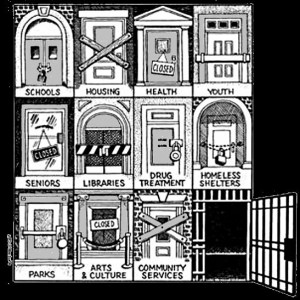A Story and a Book
On the Nature of Violence and Nonviolence
by Matt Meyer
Amidst a bombardment of Black Bloc commentary, questions about the militarized nature of tear-gas toting police, and the ever-frustrating all-too-abstract dialogues about the meanings of nonviolence, violence, strategy, tactics, and principles, comes a simple story (and a complicated book) straight out of Occu-politics. First, though, some defining of terms:
 Nonviolence (a term some have called ‘a word seeking to describe something by saying what it is not’) is used in as wide a variety of ways as there are flavors of ice cream. For some, it is strategic and revolutionary, for others principled and philosophical; for some it is a way of life and for others a mere tactic. For most practitioners, it is an often-tantalizing combination of the above. Our story will hope to add some clarity.
Nonviolence (a term some have called ‘a word seeking to describe something by saying what it is not’) is used in as wide a variety of ways as there are flavors of ice cream. For some, it is strategic and revolutionary, for others principled and philosophical; for some it is a way of life and for others a mere tactic. For most practitioners, it is an often-tantalizing combination of the above. Our story will hope to add some clarity.
Violence, as we sadly know too well, goes well beyond war to include domestic violence, random street crime, repression, and even poverty — responsible for more death than most other forms combined. But sometimes, despite this variety, it seems that the images of violence which come quickest to our minds are that of an angry kid with a rock or a gun. Our book will try to turn that image on its head.
The story is about a very small demonstration, held recently in the Bronx. Though far to the north of that now-historic original site of Occupy Wall Street, a contingent of OWS folks, especially associated with the People of Color caucus, the Anti-Racist Allies group and working with the Stop “Stop and Frisk†campaign (targeting abusive and brutalizing cops), were a key part of this mobilization. The basis of the campaign is the intensified policy of the New York Police Department, replicated throughout the country, of arbitrarily detaining individuals — usually without cause and almost always Black or Latino youth — searching them, and sometimes arresting them (most of the time, not). When the numbers of young people “stopped and frisked†reaches close to 2000 per day, as they have in New York over the past months (with over 85% youth “of colorâ€), and increases also occur in the number of unarmed young people from these same communities shot to death by police officers, people tend to get more than a little bit mad.
The early February Bronx protest was in response to the latest of too many incidents of police murder: 18-year-old Ramarley Graham killed in his own home, no weapons but those of the police, no warrant, and substantial video footage and witness testimony to the vicious nature of the police crime. Demonstrators marching around the precinct and the neighborhood were not looking to be antagonistic, but nether were they subdued; “NYPD . . . Guilty!†and “F**K the Police†could be heard.
Though some complained that the language was too rough, and the fear was that there would be a near-riot, the mobilization encouraged community members to speak out about what they’ve experienced. One after another young person, mother, local business owner, or teacher “testified†to the terror of “stop and frisk†and beyond. The militarization of the police, for communities like this one throughout the US, is nothing new at all.
Because some activists have been consistently working on these issues for years (or even just months), faces in a crowd — including the faces of police officers — become familiar very quickly. So it was that one OWS Anti-Racist Ally and Stop “Stop and Frisk†organizer Greg Allen noticed one cop who began to cry as she heard the barrage of community fury. Greg approached the officer. “Do you know the writings of James Baldwin?†he asked. She did. This officer was well aware that Baldwin’s classic essay book The Fire Next Time spoke not only of the frustrations of African Americans throughout US history but also referenced the Biblical quote, often used in spirituals: “God gave Noah the rainbow sign: No more water but the fire next time.†If we do not set right the wrongs of today, and properly vent and process the feelings of the moment, we will pay dearly in the future when tragedy befalls us again. The officer and the activist didn’t have a rainbow-sighting epiphany or come to some great unity, but they did share a moment, in the midst of the madness.
This story is not about how the police are part of the 99%. If we are to break down some of the racial barriers which have deepened since the writings of James Baldwin, to use the word “our†in as inclusive a manner as possible, we must say clearly: the police are killing and imprisoning our future — a generation is being criminalized and beaten down. It is also not a story about how we should always be yelling curses at the cops, or turning the entire energy of the Occupy or peace movement in the direction of local precincts. We must be more strategic and farsighted than that. This is a story, however, about the complexity of nonviolent direct action. With all its shouting and rage, curses and grief, testifying and dialogue, militancy and uncertainty, this is the epitome of what nonviolence has got to look like if it is to have any relevance in the years ahead.
Late last year, a small book was published with a profound title and focus: The Violence of Financial Capitalism. Swiss political economist Christian Marazzi put together in five short chapters an interpretation of the global crisis (always seen as opportunity from the corporate point of view) that doesn’t view the current moment as a shocking response to failures in the “system.†Finance Capitalism, in this view, and the intensified stratification between rich and poor, are a continuation of the process of capital accumulation which requires the violence of re-colonization, increased inequality, and a world of poverty unlike anything previously experienced. “Austerity†— another word for cutting basic needs and services from the people who produce most of what we use in the world — is not a temporary correction to ensure future widespread prosperity, but a permanent way of life for the 99%.
 This violence will continue unless we build massive, popular international mobilizations to fight for “investment policies in public services, education and welfare, the creation of public employment for the conversion of energy, a refusal to defiscalize high incomes, assert the right to wages, employment and social income and the construction of autonomous, self-determined spaces.†While Marazzi is clear that there are no single “recipes†for the best way to build alternatives, he is adamant that if we don’t do something, the violence will increase. Death by curable diseases, extreme destitution, and the repression required to keep people from doing more than mouthing off is the real violence we are facing.
This violence will continue unless we build massive, popular international mobilizations to fight for “investment policies in public services, education and welfare, the creation of public employment for the conversion of energy, a refusal to defiscalize high incomes, assert the right to wages, employment and social income and the construction of autonomous, self-determined spaces.†While Marazzi is clear that there are no single “recipes†for the best way to build alternatives, he is adamant that if we don’t do something, the violence will increase. Death by curable diseases, extreme destitution, and the repression required to keep people from doing more than mouthing off is the real violence we are facing.
Between the story and the book lie a series of choices. We can spend a lot of time, energy, and words looking to root out violence in the current movement and searching for nonviolence in the past glories of Gandhi and King. Or we can look humbly to one another (and the many not yet organized but very sympathetic), and pick our positive examples from our very midst.
Together we can focus our attention on the local, regional, and global purveyors of violence on a mass scale, and choose to resist. We can understand the links between our struggles, and Occupy the Prisons and the halls of injustice. We can struggle to create safe spaces amongst us, understanding that oppression anywhere will breed inequality and ineffectiveness everywhere. We can take our money and our bodies out of the banks and taxes and armies and police forces and corporate offices that promote war and the causes of war. We can chose constructive programs that will rebuild our broken communities, and create beloved communities where nonviolence takes on a new meaning and is not just a blast from the past.
Matt Meyer is an educator-activist, based in New York City, and serves as convener of the War Resisters International Africa Working Group. His recent books include Guns and Gandhi in Africa: Pan-African Insights on Nonviolence, Armed Struggle and Liberation (Africa World Press, 2000), the two-volume collection Seeds of New Hope: Pan African Peace Studies for the 21st Century (Africa World Press, 2008, 2010), and Let Freedom Ring: A Collection of Documents from the Movements to Free U. S. Political Prisoners (PM Press, 2008). Meyer is a contributing member of the Editorial Advisory Board for New Clear Vision.

I much appreciated your piece which also alerted me to Christian Marazzi’s book. David Graeber’s recent book “Debt: The First 5000 Years” is also very useful in understanding some of the deeper forces driving the violence of the market.
1The conversation you relate between Mr. Allen and the police officer beautifully illustrates the dialogic aspects of the present chapter of our struggle. It made me think of what Baldwin wrote about the American propensity for refusing to examine the constituent forces that have created us as we are: “People who shut their eyes to reality simply invite their own destruction, and anyone who insists on remaining in a state of innocence long after that innocence is dead turns himself into a monster.”
—James Baldwin, “Stranger in the Village,†from Notes of a Native Son
Now appearing on ZNet: http://www.zcommunications.org/on-the-nature-of-violence-and-nonviolence-by-matt-meyer
2And also on Truthout: http://www.truth-out.org/story-and-book-nature-violence-and-nonviolence/1329583441
3